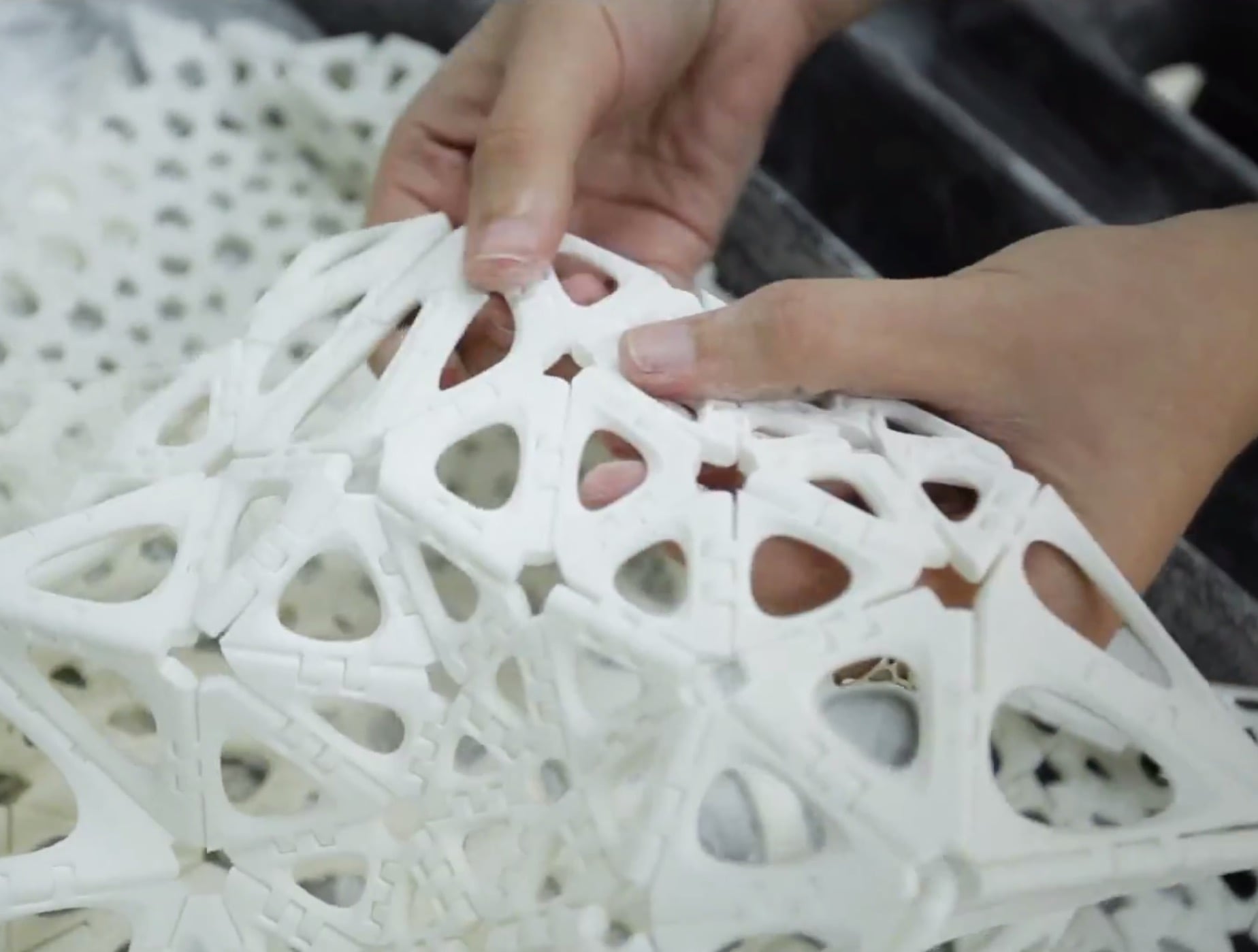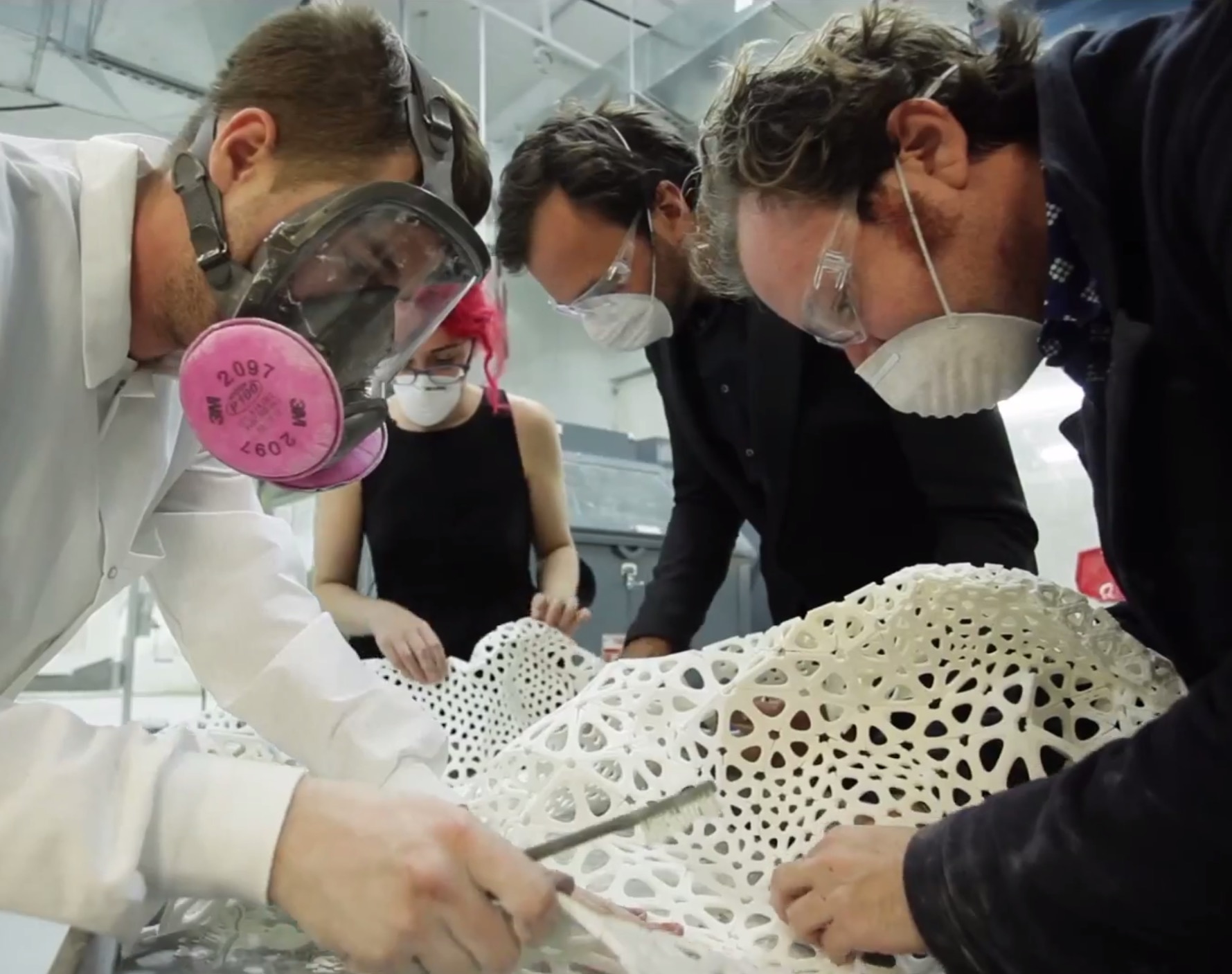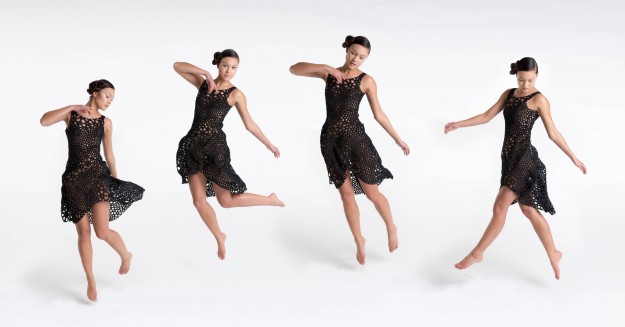
This week’s selection is Nervous Systems’ startling Kinematics Dress.
The problem of 3D printed fashion for many years has been the lack of sufficiently flexible materials. Thus, the fashion you’d often see involved “hard” objects, such as jewelry, belt buckles, head adornments or various rigid attachments. These items have also been far too small to make up an entire fashion outfit, as the build volumes of 3D printers are typically far smaller than most humans. But recently we’ve seen several folks experimenting with a new approach to flexibility: linkages.

We first saw this approach in London at Digits2Widgets lab, where they had created 3D prints with almost fabric-like qualities. However, it was only a small section. Now we see the brains at Nervous Systems, Jessica Rosenkrantz and Jesse Louis-Rosenberg, have used a similar technique to produce an entire dress with appropriate flexibility.

Rosenkrantz explains:
We’ve created a large object from a 3D scan of a person that is much larger than a 3D printer. And then we’ve used a physics simulation to fold up the dress into a small form that can fit inside the machine for fabrication. So the entire idea of this hinges on when we take it out of the machine it can unfold into a dress.

That’s the key: enabling printing of an entire fashion piece within a limited print volume. That requires flexibility, but so does the dress itself when worn. Creating a dynamic “chain-mail” like object does the trick.
And does it have flexibility! Please watch the video to see the natural motion provided by this ingenious approach.
As you’ll see in the video, it was uncertain whether the experiment would succeed. Could you really 3D print a folded dress? Would it unfold without breaking? Fortunately, the experiment was a complete success.

The work was produced at Shapeways’ Brooklyn factory, where their EOS machines printed the dress in nylon. The dress has now transferred to New York City’s MOMA for permanent display.
We believe this is a milestone in 3D print design, as it now opens up a broad range of possibilities for fabric-like fashion design. Nervous System were one of the first to produce computer-generated 3D printable jewelry some years ago; it looks like they’ve broken through another barrier this week.
Via Shapeways

